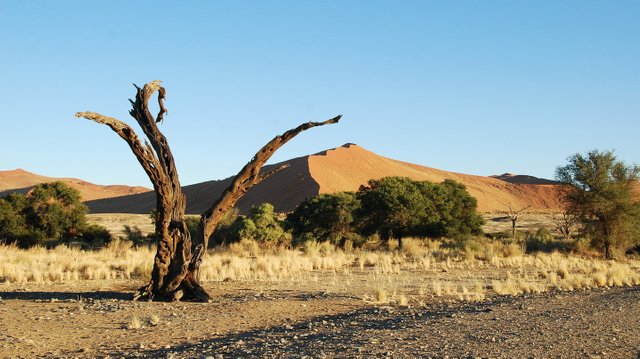The Namibian Way of Life
On the whole, Namibians are a conservative and God-fearing people – an estimated 80% to 90% of the country is Christian – so modesty in dress and behavior is considered important. Education is a crucial pillar to advancement in the country, but Namibians (especially women) still struggle to enjoy the benefits of an economy that is, for the most part, performing well.
Women In Namibia
In a culture where male power is mythologized

, it’s unsurprising that women’s rights lag behind. Even today, it’s not uncommon for men to have multiple sexual partners and, until recently, in cases where husbands abandoned their wives and their children, there was very little course for redress. Since independence, the Namibian government has been committed to improving women’s rights with bills such as the Married Persons Equality Act (1996), which equalised property rights and gave women rights of custody over their children.
Even the government acknowledges that achieving gender equality is more about changing grass-roots attitudes than passing laws. According to a US Department of State Human Rights Report in 2015, domestic violence was widespread, and endemic social problems such as poverty, alcoholism and the feeling of powerlessness engendered by long-term unemployment only served to increase women's vulnerability to violence. According to the US Department of State, the Namibian government has passed one of the most comprehensive legislative acts against rape in the world. However, women's groups and NGOs point out that many sexual crimes against women are never reported and never reach the authorities.
Namibian women do feature prominently in local and civic life, and many a Namibian woman took a heroic stance in the struggle for independence.
In 2016 women held 43 out of 104 seats in the National Assembly, an impressive 41.35% of all MPs, while women have been increasingly appointed to ministerial roles under the ruling party's much-touted 'zebra policy', whereby every ministry must have a male and a female in the top two positions. In the private sector, however, women remain underrepresented in senior leadership positions.
Women are also undoubtedly the linchpin of the Namibian home. They shoulder a double responsibility in raising children and caring for family members as well as contributing to the family income. This load has only increased with the horrendous effects of HIV/AIDS on the family structure – in 2015 just over 13% of the adult Namibian population was living with HIV/AIDS, down from 18% in 2009.
Female literacy (84.5% in 2015) is actually higher than for men (79.2%), but maternal mortality remains high (265 per 100,000 live births, compared to 129 in Botswana and 138 in South Africa).
Religion
About 80% to 90% of Namibians profess Christianity, and German Lutheranism is the dominant sect in most of the country. As a result of early missionary activity and Portuguese influence from Angola, there is also a substantial Roman Catholic population, mainly in the central and northern areas.
Most non-Christian Namibians – mainly Himba, San and some Herero – live in the north and continue to follow animist traditions. In general, their beliefs are characterised by ancestor veneration, and most practitioners believe that deceased ancestors continue to interact with the living, and serve as messengers between their descendants and the gods.
Muslims make up just 1% to 3% of the population.
Economy
The country’s economy is dominated by the extraction and processing of minerals for export. Although mining only accounts for 11.5% of the GDP, it provides more than half of foreign-exchange earnings. Most famously, Namibia’s large alluvial diamond deposits have earned it the enviable reputation as one of the world’s primary sources for gem-quality stones. However, the country is also regarded as a prominent producer of uranium, lead, zinc, tin, silver and tungsten.
The Namibian economy continues to perform strongly, with growth rates falling slightly in recent years, but still an extremely healthy 4.5% in 2015. Unemployment, however, remains high, with an official rate of 28.1% in 2014 – unofficially, the figure stands closer to 50%, with close to three-quarters of 15- to 19-year-olds unemployed.
The mining sector employs only about 2% of the population, while about half the population depends on subsistence agriculture for its livelihood. Namibia normally imports about 50% of its cereal requirements, and in drought years, food shortages are a major problem in rural areas. Although the fishing industry is also a large economic force, catches are typically canned and marked for export.
In recent years, tourism has grown considerably throughout the country, though white Namibians still largely control the industry.
The Namibian economy is closely linked to the regional powerhouse of South Africa, and the Namibian dollar is pegged one-to-one to the South African rand.
Education
The motivation to get a good education is high in Namibia. But getting an education is by no means easy for everyone, and for families living in remote rural areas it often means that very young children must be sent to schools far away, where they board in hostels. The literacy rate for Namibians in 2016 was 81.9%.